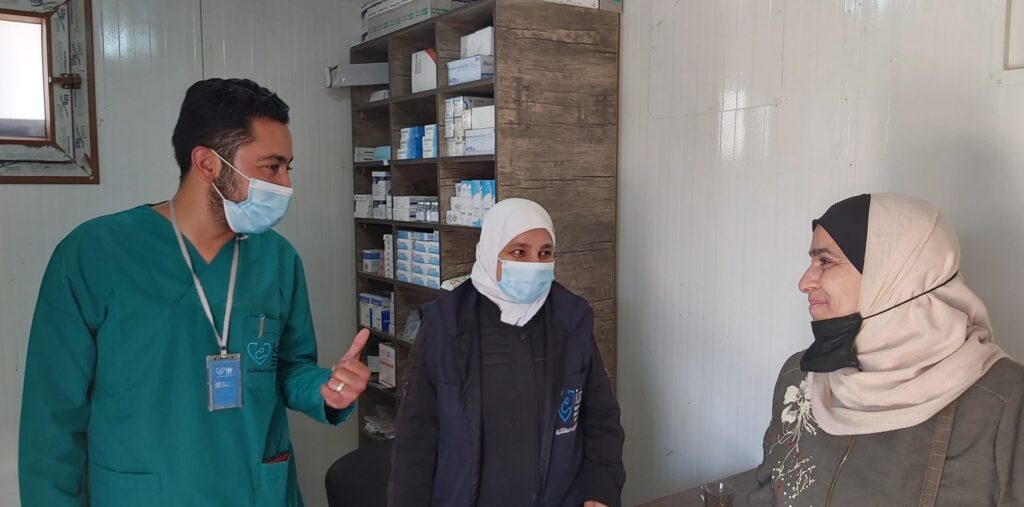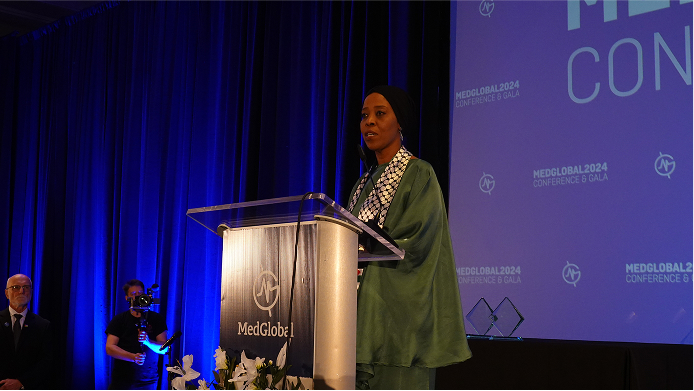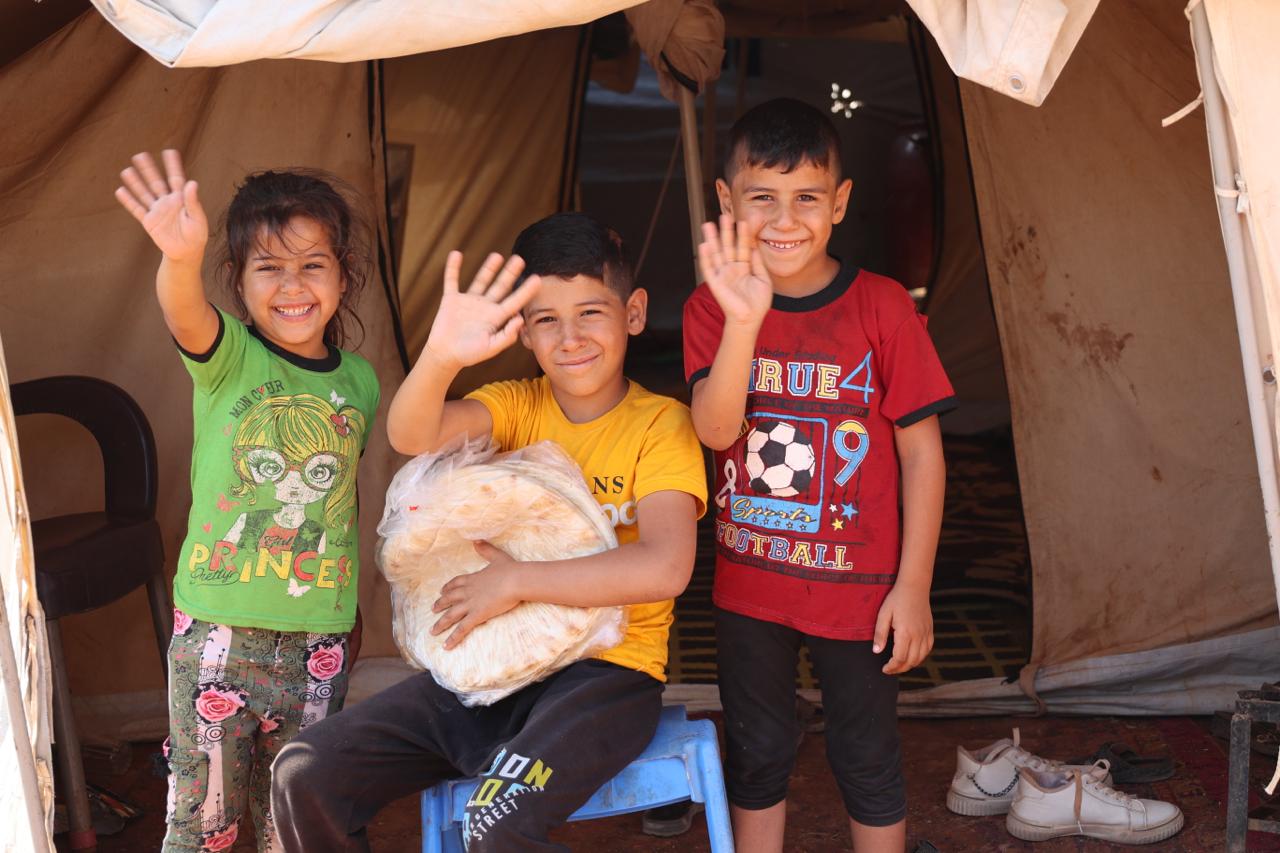Updates & Press
Blog Country | July 19, 2021
Reaching the Hard-to-Reach: A Look at the Zogra Ca
Author | MedGlobalComms

By Emma Ackerman, MedGlobal Communications & Advocacy Intern
Conflict in Syria has brought 10 years of near constant threats of violence, destruction of health infrastructure, ongoing violations of international humanitarian and human rights law, poverty and economic crisis, and widespread displacement. The UNHCR reports that 6.7 million internally displaced people (IDPs) living in Syria will need humanitarian aid in 2021, a 600,000 person increase from 2020. Ongoing conflict and destruction of critical infrastructure has caused one the world’s worst, most pervasive humanitarian crises, which has only worsened during the COVID-19 pandemic.
MedGlobal works in Syria to address health and humanitarian needs, and has recently extended operations to support health programs in the Zogra IDP camp. Zogra is located 27 km (or 17 miles) from Jarablus, a town in the Aleppo province of northwest Syria – very close to the Turkish border. The camp first opened in March 2017 to receive residents of the al-Waer neighborhood of Homs City who were forcibly displaced after years of siege and armed conflict. Most had already been displaced within Homs multiple times. Zogra later received waves of IDPs from Eastern Ghouta and Idlib. Despite reports that Zogra was prepared to receive IDPs, the first to arrive found a ‘catastrophic situation’ where most had to spend the first night either on the ground or in the buses they had arrived in. Tents were delivered soon after, but bathrooms and water sanitation services remained nonexistent. According to a resident of Zogra, “If the pain and oppression had a voice, you could hear it in the Zogra refugee camp north of Aleppo.”
From a geographical perspective, Zogra is one of the most difficult camps to reach, resulting in a massive unmet humanitarian need among IDPs in the camp. MedGlobal Turkey Country Director Dr. Hala Alghawi recently travelled to Zogra camp on a trip that took over three hours. Lack of safe roads, lack of available transportation, and expense of travel to the camp from nearby locations such as Jarablus and Azaz contributed to the difficulty of travel to this hard-to-reach area. She estimates that as of June 2021, 15,000 people (or around 3,000 families) are living in Zogra camp. A recent needs assessment of Zogra camp conducted in August 2020 echoes many other accounts of dire humanitarian needs in Zogra, including: insufficient and infrequent distribution of food, unavailability of health care services amid increasing need, chronic unemployment, poverty, scarcity of fuel for heating & cooking, shortage of weather insulators, and lack of warm clothes. Insufficient water sanitation and sewage systems are still grave health concerns in Zogra. The toilets are essentially open pits that facilitate the spread of diseases and epidemics, especially during summer months. Food security remains one of the most pressing needs among IDPs in Zogra. In addition to the 2017 cholera outbreak, 10 cases of poisoning in children due to unclean water were reported in 2019. Despite the acute need for more comprehensive health care, health facilities in Zogra are rudimentary, consisting only of a single pharmacy, pediatric clinic, gynecology clinic, and general medicine clinic. These primary care services are the only form of medical care available in Zogra. If specialized services are needed, residents must make the long, arduous, and expensive journey into Jarablus, where they will then likely be referred to cities such as Al Bab and Azaz, another two-hour trip. Vulnerable populations – such as pregnant women, the elderly, chronic disease patients, people with disabilities, critical care patients, ophthalmic cases, cardiology cases, and other subspecialty needs patients – require the most specialized care, and are therefore at an even greater risk for negative health outcomes during displacement. While observing these hardships, Dr. Alghawi shard a poignant reflection:
“It is not the Syria which I grew up in years ago. It was emotionally very painful to see my people, children and elderly, live in these inhumane circumstances. They have to adapt and fight for a better future. They seek safety and dignity but unfortunately they got the [bare] minimum.”
Existing aid programs and health care services have lessened the suffering of IDPs since arriving in Zogra, but are very far from addressing the many pressing needs of this forgotten population, and do not erase the needless suffering that has already occurred. Dr. Alghawi has highlighted some of the largest gaps in current services:
- Medication supply shortages, especially for chronic diseases
- Lack of specialized health services less than 1.5 hours away from Zogra
- No services or centers for children with learning disabilities
- No mental health & psychosocial support (MHPSS) services
- No sexual and reproductive health (SRH) awareness or education programs
- No rehabilitation centers for physical and mental disabilities
MedGlobal operations in the hard-to-reach Zogra camp aim to build capacity in existing health facilities and address the needs of the most vulnerable. Just this past week, MedGlobal donated a six month supply of medication for acute pediatric cases and provided 650 patients suffering from non-communicable diseases with vital medications. Dr. Alghawi passed on this message from a field manager in Zogra Camp:
“May God reward you and bless you for the great effort made to visit the camp. You made their hearts happy and they felt that someone remembers and takes care of them.”
As of June 1, only 12% of the $628.6 million requested by UNHCR for the 2021 Syria Operation has received funding. The world cannot forget about the displaced people in Zogra. There are numerous opportunities for implementation of advocacy activities and health programs in Zogra, and even a small amount of funding will make a noticeable difference in the quality of care available to Zogra’s most vulnerable IDPs.


